Booster seats
Precautions on booster seats
WARNING
If a booster seat and seat belt are not used properly, the risk of a child being injured in a sudden stop or collision greatly increases:
• Make sure
the shoulder portion of
the belt is away from the child’s face
and neck and the lap portion of the
belt does not cross the stomach.
• Make sure the
shoulder belt is not
behind the child or under the child’s
arm.
• A booster seat
must only be installed
in a seating position that has
a lap/shoulder belt.
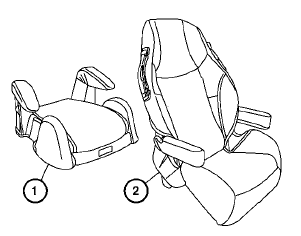
Booster seats of various sizes are offered by several manufacturers. When selecting any booster seat, keep the following points in mind:
• Choose
only a booster seat with a label
certifying that it complies with Federal Motor
Vehicle Safety Standard 213 or Canadian
Motor Vehicle Safety Standard 213.
• Check the
booster seat in your vehicle to be
sure it is compatible with the vehicle’s seat
and seat belt system.
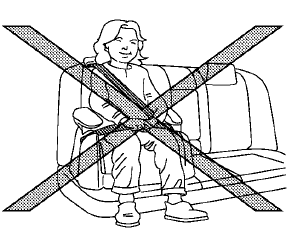
• Make
sure the child’s head will be properly
supported by the booster seat or vehicle
seat. The seatback must be at or above the
center of the child’s ears. For example, if a
low back booster seat 1 is chosen, the
vehicle seatback must be at or above the
center of the child’s ears. If the seatback is
lower than the center of the child’s ears, a
high back booster seat2 should be used.
• If the
booster seat is compatible with your
vehicle, place your child in the booster seat
and check the various adjustments to be
sure the booster seat is compatible with
your child. Always follow all recommended
procedures.
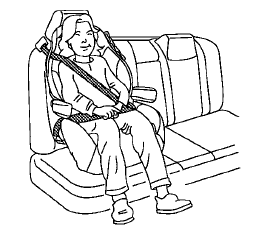
All U.S. states and Canadian provinces or territories require that infants and small children be restrained in an approved child restraint at all times while the vehicle is being operated.
The instructions in this section apply to booster seat installation in the rear seats or the front passenger seat.
Booster seat installation
CAUTION
Do not use the lap/shoulder belt Automatic Locking Retractor (ALR) mode when using a booster seat with the seat belts.
Refer to all Warnings and Cautions in the “Child safety” earlier in this section, “Child restraints” earlier in this section and “Booster seats” earlier in this section before installing a child restraint.
Follow these steps to install a booster seat in the rear seat or in the front passenger seat:
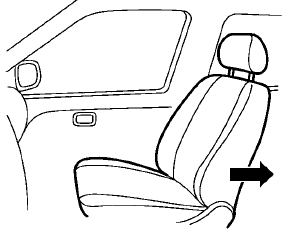
1. If you must install a booster seat in the front seat, move the seat to the rearmost position.<> 2. Position the booster seat on the seat. Only place it in a forward-facing direction. Always follow the booster seat manufacturer’s instructions.
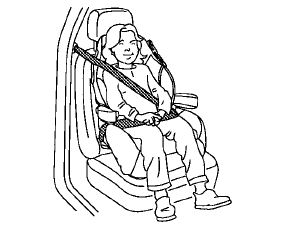
3. The booster seat should be positioned on the vehicle seat so that it is stable.
If necessary, adjust or remove the head restraint or headrest to obtain the correct booster seat fit. If the head restraint or headrest is removed, store it in a secure place. Be sure to reinstall the head restraint or headrest when the booster seat is removed. See “Head restraints” earlier in this section for head restraint or headrest adjustment, removal and installation information.
If the seating position does not have an adjustable head restraint or headrest and it is interfering with the proper booster seat fit, try another seating position or a different booster seat.
4. Position the lap portion of the seat belt low
and snug on the child’s hips. Be sure to
follow the booster seat manufacturer’s
instructions for adjusting the seat belt
routing.
5. Pull the shoulder belt portion of the seat belt
toward the retractor to take up extra slack.
Be sure the shoulder belt is positioned
across the top, middle portion of the child’s
shoulder. Be sure to follow the booster seat
manufacturer’s instructions for adjusting the
seat belt routing.
6. Follow the warnings, cautions and instructions
for properly fastening a seat belt
shown in “Seat belts” earlier in this section.
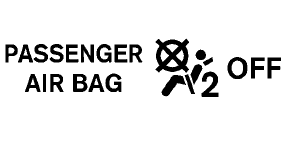
7. If the booster seat is installed in the front
passenger seat, place the ignition switch in
the ON position. The front passenger air bag
status light  may or may not illuminate
depending on the size of the child and the
type of booster seat used. See “Front
passenger air bag and status light” later in
this section.
may or may not illuminate
depending on the size of the child and the
type of booster seat used. See “Front
passenger air bag and status light” later in
this section.
See also:
Car phone or CB radio
When installing a car phone or a CB radio in
your vehicle, be sure to observe the following
cautions, otherwise the new equipment may
adversely affect the electronic control modules
and electronic ...
Connecting procedure
1. Push the PHONE button or the
button,
and select the “Connect Phone” key.
2. When a PIN code appears on the screen,
operate the compatible Bluetooth® cellular
phone to enter the PIN ...
Capacities and recommended fuel/lubricants
The following are approximate capacities. The actual refill capacities may
be a little different. When refilling, follow the procedure
instructed in the “8. Maintenance and do-it-yourself” sect ...
